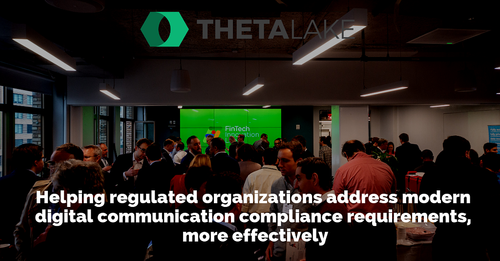Theta Lake is a machine learning and AI platform analyzing audio and video content for compliance risk. “We focus on regulated industries like financial services,” said Anthony Cresci, VP Business Development & Operations in an exclusive interview.
Certain industries have regulatory requirements around retention and how long companies store electronic communications. This could be up to five years, he explained. In addition, there is a need for supervision – making sure people aren’t saying or doing the wrong thing from a regulatory perspective.
Anthony Cresci, VP Business Development & Operations Theta Lake
He said, “Since 2009 there have been $342B in fines levied against banks for misconduct and this platform supervises the content, scanning billions of minutes of audio and video looking for compliance risks.”
Zoom recently announced an App Marketplace and Theta Lake is one of the first apps available.
“We made big promises at Zoomtopia 2018, and I’m proud that our team has delivered on them with incredible new features and products that significantly enhance our unified video communications platform,” said Oded Gal, head of product management for Zoom. “Our goal is to create frictionless, end-to-end communications experiences for our customers. Adding cloud PBX, refreshing our desktop interface, developing new conference room functionalities, as well as releasing more integrations, all serve to do just that.”
Anthony said, “Zoom generates 42B annualized meeting minutes growing at 100% YoY and the problem statement is how do you actually review all this content?” He continued, “The only way is with AI and ML. Where we really focus is on providing a solution to have AI supervise all of the media content for a financial services organization. We then point the compliance teams to areas of risk so they can focus and manually review higher risk content.”
They have 30 pre-built policies for things like FINRA, FFIEC, FCA, MiFID II and also corporate compliance and conduct risk. In addition, profanity, adult brand logos as well as contentious topics or symbols. Customers can also create custom detection rules.
Anthony said, “Not only are we providing compliance teams policies around regulations so non-tech reviewers can supervise the digital content but we also allow organizations to create their own policies to flag risk or content pertinent to them.”
They also look for things like promissory or misleading statements – “I can guarantee a 20% return.” Or customer complaints which may need to be reported. Also, risky behavior – taking a conversation away from a recorded line. And PII. Things like corporate account numbers.
They also have facial recognition of people in videos and if you want them removed, you can delete them. This is important because of the Right to be Forgotten – part of GDPR and other regulations require this functionality.
He also explained, the other thing people struggle with is the retention of electronic communications; performing e-discovery, searching across metadata and finding content. The target content could be recorded audio or shared in a presentation, shared on-screen and pertinent to specific subject matter.
Most of these e-discovery and supervision processes have been very manual he explained. Many financial services teams have a policy to review 5-10% of call recordings via a random sampling. Theta Lake can point you to highest-risk call recordings and also point you to the highest-risk content based on these policies.
The other ways people have approached supervision is by using transcripts which can be 80-90% accurate he explained. But his company applies transcription relevance normalization which adds proximity filtering (words that sound alike) combinations of words to detect compliance risk.
In other words, you may say account # is 314 – it may, however, be transcribed as count member dirty one F-O-R. Theta Lake’s technology can detect this is a PII violation.
What’s interesting about the Zoom partnership is financial services have been slow to adopt newer forms of tech like video but the demand is there he believes. 61% of high net worth clients are interested in video chatting with financial advisors so they expect the trend of financial services organizations enabling video chat for more use cases such as engaging customers and prospects to continue.
“The same policies that apply to text will apply to audio and video content,” he exclaimed. “Right now, video is a blind spot for compliance organizations and teams because the tools didn’t exist.”






